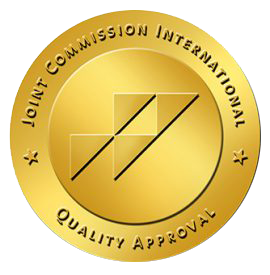Dr. Carole Youakim: All Kinds of Allergies are Curable through Immunotherapy!
- Home
- BLOG
- Dr. Carole Youakim: All Kinds of Allergies are Curable through Immunotherapy!
-
FEB 23, 2017
- 0 COMMENTS
-
Categories
- Anesthesiology (Ar)
- Anesthesiology (En)
- Anesthesiology (Pb)
- Cardiology & Coronary Care Unit (Ar)
- Cardiology & Coronary Care Unit (En)
- Cardiology & Coronary Care Unit (Pb)
- Cardiothoracic & Cardiac Surgery Unit (Pb)
- Departments – Publications
- Dermatology (En)
- Dermatology (Pb)
- Diagnostic & Interventional Radiology (Ar)
- Diagnostic & Interventional Radiology (En)
- Diagnostic & Interventional Radiology (Pb)
- Emergency Medicine (Pb)
- Endocrinology & Metabolism (Ar)
- Endocrinology & Metabolism (En)
- Endocrinology & Metabolism (Pb)
- Events
- Family Medicine (Ar)
- Family Medicine (En)
- Gastroenterology & Hepatology (Ar)
- Gastroenterology & Hepatology (En)
- Gastroenterology & Hepatology (Pb)
- General Pediatrics (Ar)
- General Pediatrics (En)
- General Pediatrics (Pb)
- General Surgery (Ar)
- General Surgery (En)
- General Surgery (Pb)
- Hematology & Oncology (Ar)
- Hematology & Oncology (En)
- Hematology & Oncology (Pb)
- Human Resources
- Infectious Diseases (Ar)
- Infectious Diseases (En)
- Infectious Diseases (Pb)
- Internal Medicine (Ar)
- Internal Medicine (En)
- Internal Medicine (Pb)
- Nephrology & Hypertension (Ar)
- Nephrology & Hypertension (En)
- Nephrology & Hypertension (Pb)
- Neurology & Epilepsy (Pb)
- Neurosurgery (Ar)
- Neurosurgery (En)
- Neurosurgery (Pb)
- News
- Nuclear Medicine (Pb)
- Obstetrics & Gynecology (Ar)
- Obstetrics & Gynecology (En)
- Obstetrics & Gynecology (Pb)
- Others
- Pediatric Surgery (Ar)
- Pediatric Surgery (En)
- Plastic & Reconstructive Surgery (En)
- Psychiatry & Psychology (En)
- Psychiatry & Psychology (Pb)
- Pulmonary & Critical Care Medicine (Ar)
- Pulmonary & Critical Care Medicine (En)
- Pulmonary & Critical Care Medicine (Pb)
- Radiation Oncology (Ar)
- Radiation Oncology (En)
- Radiation Oncology (Pb)
- Rheumatology (Ar)
- Rheumatology (En)
- Rheumatology (Pb)
- Vascular Surgery (En)
- Vascular Surgery (Pb)
- Dr. Fadi Nasr: Immunotherapy is cancer patients’ new hope, and Lebanon is the first to adopt it! 106175 Jan 20, 2017
- Colorectal Cancer Awareness Article 28582 Mar 9, 2019
- Troubles can be emerging from your thyroid glands! 23810 Feb 1, 2018
- ما هو إلتهاب المفاصل؟ 14490 Oct 4, 2019
- NIPT: a new screening tool during pregnancy 14105 Apr 18, 2018
Photostream
Archives
Mount Lebanon Hospital University Medical Center
You can get in touch with us:
by phone: +961-5-957000
or by whatsapp:
1- Outpatients Clinics:
2- Outpatient Admission:
3- Homecare:
4- Diagnostic & Interventional Radiology:
5- Diagnostic Cardiology & Pulmonary Center:
6- Radiation Oncology Center:
Send us an email: mlh@mlh.com.lb
-
Register as a Supplier to
Submit Offers Signup here
-
Career Opportunities
Apply Now Email our HR team
-
Follow us on
Facebook Get our daily health tips
Contact Us
- +961 5 957000
- Mount Lebanon Hospital University Medical Center joins the Clinerion Patient Network Explorer platform, accelerating the introduction of innovative therapies to Lebanon. Dec 16, 2022
- Artificial intelligence – AI in the screening & diagnosis of cancer at MLHUMC Dec 13, 2022
- 3rd JCI Accreditation Nov 16, 2022
- Awake craniotomy for Brain Tumors: indications, benefits, types of anesthesia and surgical techniques Jun 4, 2022
- Health Literacy Levels and Predictors Among Lebanese Adults Visiting Outpatient Clinics in Beirut Jan 21, 2022
MLH UMC is JCI Accredited

Copyright © 2025- Mount Lebanon Hospital






